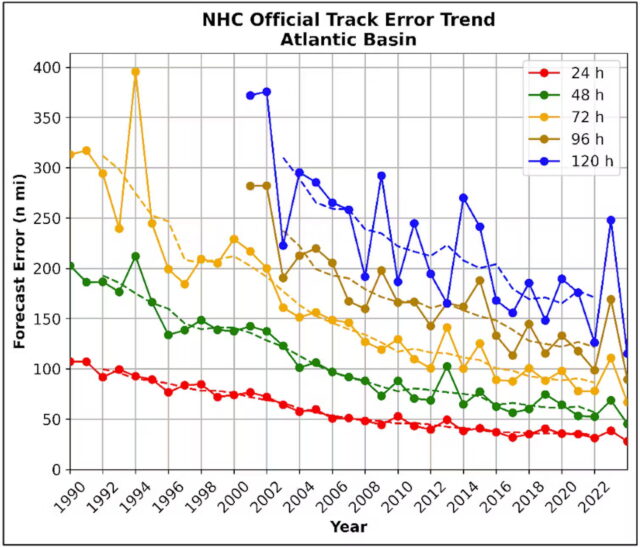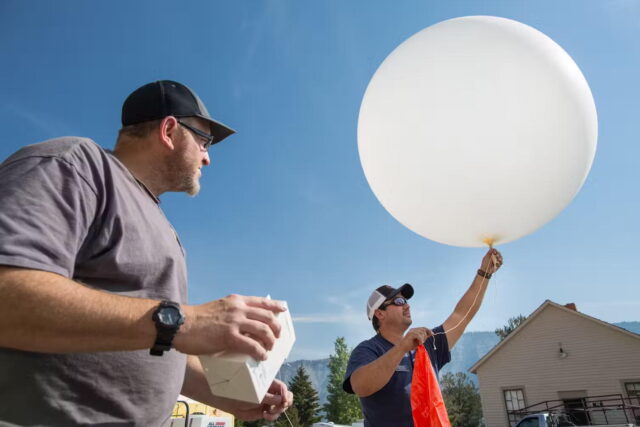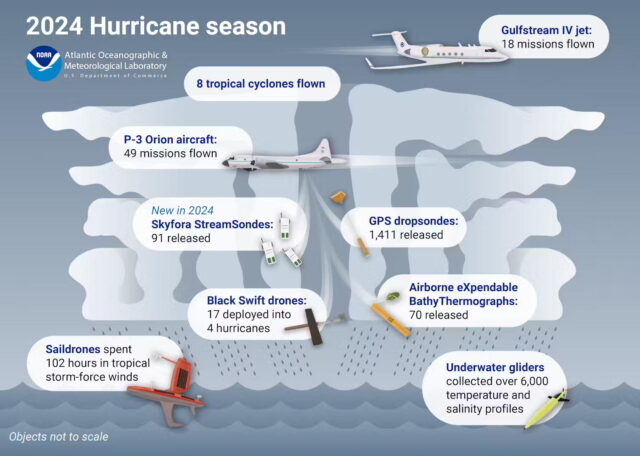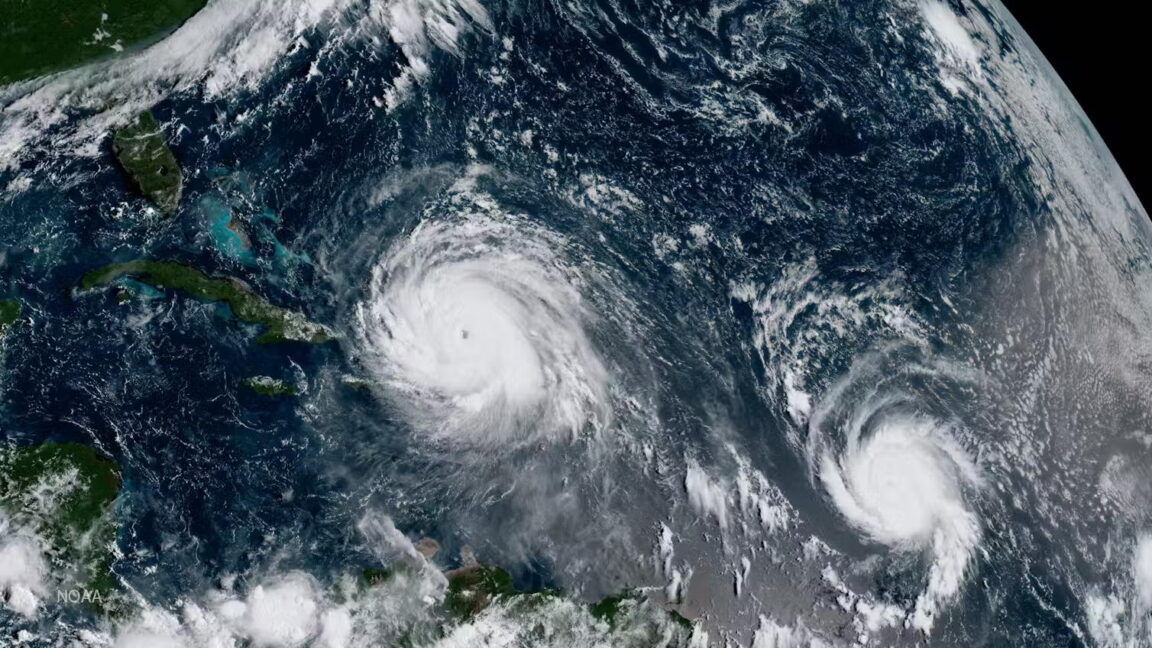This article originally appeared on Inside Climate News, a nonprofit, non-partisan news organization that covers climate, energy, and the environment. Sign up for their newsletter here.
One hundred days into the second Trump administration, many environmentalists’ worst fears about the new presidency have been realized—and surpassed.
Facing a spate of orders, pronouncements, and actions that target America’s most cherished natural resources and most vulnerable communities, advocates fear the Trump agenda, unchecked, will set the country back decades.
“It is not an overstatement to say that the Trump administration has launched the worst White House assault in history on the environment and public health. Day by day and hour by hour, the administration is destroying one of the signature achievements of our time,” said Manish Bapna, the president and CEO of the environmental nonprofit Natural Resources Defense Council (NRDC). “If this assault succeeds, it could take a generation or more to repair the damage.”
US Sen. Sheldon Whitehouse, D-R.I., ranking member of the Senate Environment and Public Works Committee, said in a statement to Inside Climate News that the president’s “corrupt assault on clean air, clean water, and affordable clean energy has helped make him the least popular president ever 100 days into the job.” Polling shows President Donald Trump’s approval rate—39 percent, according to a Washington Post-ABC News-Ipsos poll—is lower than any president’s at the 100-day mark since such polling began.
“Trump’s fossil-fuel-funded gangster government prioritizes lawlessness and disdain for the Constitution, not lowering household energy costs, or incentivizing economic growth, or reducing pollution,” Whitehouse said. “The American people know this has made them worse off, and it will get worse still.”
A press release issued by the White House on Earth Day last week presented a very different picture. Titled “On Earth Day, We Finally Have a President Who Follows Science,” the memo outlined key actions taken by Trump on the environment so far. These included “promoting energy innovation for a healthier future,” such as carbon capture and nuclear energy; “cutting wasteful regulations” like emissions rules for coal plants; “protecting wildlife” by ordering a pause on offshore wind; and “protecting public lands” by opening more of them to oil, gas and mineral extraction “while ensuring responsible management.”
When reached for comment, the White House did not respond directly to the criticisms leveled at the administration for its environmental record so far, but instead affirmed a commitment to protection—repeating words Trump used during his campaign and since his election.
“As the President has said, the American people deserve clean air and clean water,” said White House spokeswoman Taylor Rogers. “In less than 100 days, EPA Administrator [Lee] Zeldin is taking steps to quickly remove toxins from our water and environment, provide clean land for Americans, and use commonsense policies to Power the Great American Comeback.”
To environmental experts, the Earth Day press release was indicative of a pattern in the administration’s communications with the public. “This is really a master class in doublespeak,” said Hannah Perls, a senior staff attorney at the Harvard University Environmental and Energy Law Program.
Rather than supporting “a healthier future,” in its first 100 days, the administration slashed government agencies and rescinded rules that lower pollution levels and improve public health outcomes. Instead of “energy innovation,” the president championed coal while killing renewable energy projects. Instead of protecting public lands, Trump fired thousands of parks and forest service employees, threatened to gut the Endangered Species Act, and encouraged logging and drilling on federal lands. And instead of “following science,” the president cut critical research funding across disciplines and ignored expert consensus on climate change and conservation.
The administration, which has doubled down on climate denial, is also withdrawing the US from the Paris Agreement—the treaty designed to help the world avoid the most dangerous consequences of the climate crisis—and cut loose the scientists working on the nation’s key climate assessment.
While it’s typical for a new administration to alter existing policies, the actions of the second Trump administration on climate and the environment are unprecedented—even compared with Trump’s first term.
“We always anticipate policy reversals with every administration, whether it’s Democrat or Republican,” Perls said. Those reversals used a “scalpel approach,” where policies were considered and changed on a case-by-case basis.
“This time around, they’re using dynamite,” she said.
A green light for pollution
“People under 50 don’t have any real life experience with just how dirty the air was before the Clean Air Act was passed in 1970,” said David Hawkins, senior attorney in climate and energy at NRDC. “Well, I do.”
He described living in New York City in the 1960s: his window sill “black with soot in the morning”; plumes of smoke pouring from scores of apartment buildings, building furnaces and incinerators; the “tunnel of haze” obscuring Manhattan’s long avenues, the lead in the air “spewed from all of these automobiles, trucks and buses.”
Over his lifetime, Hawkins said in a call with the press in April, he watched as government regulations helped to curb this pollution. Regulations lowered toxic emissions. They reduced rates of respiratory illnesses, heart disease, and premature deaths. And they brought huge economic and environmental benefits to the US.
“Here’s the scary news: These gains can be lost,” he said. “Keeping the air clean is not automatic.”
Hawkins said the administration’s attempts to sunset or repeal swaths of environmental regulations could undo the progress of the last 55 years.
“We don’t know exactly how broadly this executive order will be applied, but it could mean the end of protections that are keeping our air clean,” he said. “If the rules are sunset, there’s no legal obligation for these polluters to keep their equipment operating.”
Environmental attorneys have called the sunsetting provision “simply unlawful” and questioned whether it would ever hold up in court.
But the order is just one effort of dozens by the administration to roll back regulations and drastically shrink the workforce that writes, interprets, and enforces those rules. The White House plan for the Environmental Protection Agency would cut the budget by 65 percent, forcing the agency to operate with less money than it has ever had since its founding in 1970, adjusted for inflation.
Perls worries about the loss of career expertise at the EPA, which can’t easily be replaced—and she is concerned about the signal the orders send to industry, even if they are ultimately struck down in court.
“I think it is reasonable to anticipate that many industries are going to see this as a green light to pollute with abandon,” she said.
“The administration has made very clear in this first 100 days who they are for and who they are against,” said Geoff Gisler, program director for the Southern Environmental Law Center. “And as we expected, they are looking to empower heavy polluting industries, and they are putting the burden on communities to deal with the pollution that results from this.”
The SELC is a nonprofit law firm that represents environmental groups across the Southeast on a wide range of cases. The group is currently suing the Trump administration, arguing that the administration’s freezing of grant funds is an “unlawful interference by the executive branch” and violates the First Amendment.
“What we’re seeing is complete disregard for any sort of legally required process,” Gisler said. “We saw some of that in the first [Trump] administration. This time they’re taking it to a new level.”
Perls and Hawkins both emphasized that the administration’s policies, if enacted as proposed, will have a real-world impact on many Americans’ lives.
“There are very real public health harms that come from having our primary public health enforcement agency abandon its obligation to protect and safeguard human health,” Perls said of cuts at EPA and a March memo saying the agency would no longer consider race or socioeconomic status in its enforcement. Communities with more people of color and lower-income residents often face worse pollution, the result of both historic and current discrimination.
“People will die as a result of these exposures. It might not be tomorrow, it might not be in six months, but people will die,” she said. The Harvard environmental and energy law program is tracking the administration’s environmental justice actions in an online database.
Environmental justice organizations nationwide are reeling from federal funding freezes. EPA suspended millions of dollars in grants for projects like planting trees, air monitoring and preventing child lead poisoning. The agency is also dismantling its environmental justice offices and deleted its environmental justice mapping tool, EJ Screen, that helps people understand how exposures differ across the nation.
“Causing chaos was the goal,” said Patrick Drupp, director of climate policy for the Sierra Club. “Small community groups that are counting on that money for environmental justice, or community solar projects—they can’t wait out long court battles, even if they ultimately prevail. Same thing with federal workers who were illegally fired. People can’t just sit around and wait eight months for a court case to play out and find out whether they’re actually able to keep their job.”
The administration’s efforts to erase and halt federal work on climate and the environment have not been limited to EPA. At the Department of Homeland Security, Secretary Kristi Noem ordered the end of “all climate change activities and the use of climate change terminology.” The Federal Emergency Management Agency ended the Building Resilient Infrastructure and Communities program, which allocates grants for projects like flood control, wildfire management and infrastructure maintenance that reduce disaster risk.
Sweeping cuts at the Department of Health and Human Services have impacted programs like the Low-Income Housing Energy Assistance Program, which has seen funding cut off because all of the federal staff administering the program were fired. The program helps American families with heating and cooling bills, weatherizing their homes, and keeping their electricity and gas turned on. HHS also fired 200 staff members in the Centers for Disease Control and Prevention’s Division of Environmental Health Science and Practice, who worked on health issues related to the environment and climate change, like asthma and air pollution.
In February, Attorney General Pam Bondi ordered the Department of Justice to terminate “all environmental justice programs, offices, and jobs.”
“The attack on environmental justice is an attack on the millions of Americans relying on clean air and clean water across our country,” said Sen. Ron Wyden, D-Ore., in a press release in response to Bondi’s move. “Trump and his oil-loving cronies are not just making the climate crisis worse. They are also harming the most vulnerable communities in America.”
In Trump’s first administration, his team at EPA framed their approach as “back to basics”: a turning away from action on climate change and back to the air and water quality concerns that were the original impetus for federal environmental law.
When asked by Inside Climate News about the environmental record of the second Trump administration’s first 100 days, a White House official noted some examples: the ramping up of efforts to end decades of raw sewage flowing into southern California from Tijuana, Mexico, and Zeldin’s work on a set of proposals to tackle exposure to dangerous “forever chemicals,” known as PFAS.
But many environmental accomplishments the White House has pointed to raise their own concerns.
For example, Zeldin has been notably silent on whether the administration will oppose the chemical industry’s effort to overturn the Biden administration’s PFAS regulations, which were accompanied by $1 billion for state-level water testing and treatment.
The White House has touted its speed-up in approval of state plans to implement the Clean Air Act, many of which were backlogged under the Biden administration. Some clean air groups fear the state plans are being rubber-stamped.
A White House official also noted that the EPA completed the largest wildfire response in agency history, clearing 13,000 Los Angeles properties of hazardous materials in just 28 days at the start of the administration. But local groups protested the EPA’s use of a coastal wetland as a staging site for the toxic debris from the Palisades and Eaton fires.
The administration’s cuts have largely been carried out in the name of “eliminating waste,” and led by Trump donor Elon Musk’s Department of Government Efficiency (DOGE). But experts say it’s clear from the aggressive scale and speed of the administration’s conduct that this is not really the goal.
“If you’re trying to cure cancer, you excise the tumor. You don’t kill the patient,” Perls said. “They’re not trying to excise a tumor. They’re trying to kill the administrative state.”
Mass layoffs, minimized monuments, and Musk
Since retaking office, Trump has dramatically reconfigured federal agencies that manage Western public land, to the potential detriment of those landscapes and the wildlife and communities that rely on them.
In February, the National Park Service fired 1,000 employees only for two US District Court judges to order them reinstated, destabilizing parks across the country as they prepare for the busiest season of the year. Trump has also cut the US Forest Service’s workforce by 10 percent, and thousands of others reportedly accepted resignation offers. Funding freezes have stalled vital conservation work.
Now, employees at DOGE, overseen by billionaire Musk, have been given the reins at the Department of the Interior, where Secretary Doug Burgum has touted the idea of selling off public lands to address the nation’s housing crisis. The Trump administration has also issued executive orders to streamline mining and fast-track highly controversial projects.
“Federal public lands are owned by all Americans,” said Mike Quigley, the Arizona state director for the Wilderness Society. “They’re managed by the federal government on our behalf, and so if you’re looking to do a mine on public land, the comment period and the NEPA process that the agency undergoes was designed to allow the owners of the land a say. That’s you, me, the person down the street, your next-door neighbor, whoever. And when I hear ‘streamlining,’ I worry that that’s a euphemism for rubber stamps.”
Fast-tracking mining and oil and gas drilling could threaten some of America’s most iconic species and landscapes. “We have some of the last best wildlife habitat in the lower 48,” said Alec Underwood, program director of the Wyoming Outdoor Council, an environmental nonprofit based in Lander. “It’s irreplaceable.”
Staffing and regulatory whiplash has already had tangible impacts. Layoffs have affected “real folks who live in our communities and work on public lands,” said Underwood. “A lot of them are now out of jobs.”
The oil and gas industry has cheered Trump’s actions over the past 100 days. The Western Energy Alliance, a Colorado-based trade association for oil and gas companies, praised the president’s “decisive action to promote oil and natural gas development.”
“We’ve seen a dramatic shift from an administration that imposed restrictive policies, limited permitting, and threatened energy projects, to one that is actively supporting development,” said Kathleen Sgamma, president of the alliance, in a press release. Sgamma, who withdrew from consideration to lead the Bureau of Land Management after her loyalty to Trump came under scrutiny, also lauded the EPA’s “aggressive deregulatory actions.”
Elsewhere in the West, communities and environmentalists are bracing for the reduction or elimination of national monuments. In March, the Trump administration announced it would eliminate California’s Chuckwalla and Sáttítla Highlands national monuments before removing language from a White House fact sheet announcing the decision. Last week, The Washington Post reported the administration was considering shrinking Baaj Nwaavjo I’tah Kukveni-Ancestral Footprints of the Grand Canyon, Ironwood Forest, Chuckwalla, Organ Mountains-Desert Peaks, Bears Ears, and Grand Staircase-Escalante national monuments—all despite monuments and their protections enjoying nearly universal popularity with voters.
Erik Schlenker-Goodrich, executive director of the Western Environmental Law Center, said the administration’s haphazard approach to governing puts the country in peril.
“It does feel like we’re Wile E. Coyote,” he said. “We’ve run off the proverbial cliff edge and we are hanging in open space with nothing underneath us, and that feels deeply perilous.”
He added, “Gravity will take hold at some juncture, and so I think a lot of organizations like ours are thinking about, ‘How do we mitigate the impacts of that fall to things we care about, like public lands and wildlife in the West, free-flowing rivers?’”
The administration has also taken aim at conservation and climate-focused programs run by the US Department of Agriculture (USDA), stranding tens of thousands of farmers who were counting on funding and technical help from the agency.
Under Trump’s Unleashing American Energy executive order, billions of dollars in conservation and climate funding for farmers were immediately frozen. The order targeted the Biden administration’s signature climate legislation, the Inflation Reduction Act, which directed $19.5 billion to farmers for implementing climate practices or energy efficiency measures on their farms. Some of that funding has since been unfrozen by Agriculture Secretary Brooke Rollins, but it remains unclear when it will be distributed.
Lawsuits filed by legal advocacy groups on behalf of farmers are seeking the restoration of some of that funding. An analysis by former USDA employees says the agency owes nearly $2 billion to more than 22,000 farmers for conservation and energy efficiency programs.
Earlier this month the agency canceled a $3 billion Biden-era program, the Partnership for Climate-Smart Commodities, rebranding it as the Advancing Markets for Producers program. The agency said it would only continue funding projects under the program according to new criteria.
Similarly, the agency said it would only fund projects under the Rural Energy for America Program if recipients revise their grant applications to “remove harmful DEIA and far-left climate features.” DEIA stands for Diversity, Equity, Inclusion and Accessibility, a term that includes equal-opportunity efforts in the workplace and other settings.
The agency, which also oversees the Forest Service, issued an “emergency situation determination” to open up 110 million acres to industrial timber interests—a move that environmental groups say will hasten the destruction of old-growth forests and make forests more vulnerable to drought and wildfire. The memo came shortly after Trump issued an executive order to expand timber production in the country by 25 percent.
“President Trump has demonstrated his indifference to the needs of farmers most visibly with his erratic and devastating tariff policy, but his administration is also leaving farmers in the lurch when it comes to climate change,” said Karen Perry Stillerman, who oversees food and farm programs for the Union of Concerned Scientists.
Stillerman noted that the administration scrubbed climate data from websites, forced out climate scientists at USDA and sacked the entire team that supports the US Global Change Research Program, worsening fears that the sixth National Climate Assessment, the comprehensible, congressionally mandated scientific report, will be cancelled.
“By systematically taking away vital tools that farmers need to thrive in a hotter and more dangerous future,” Stillerman said, “they are endangering all of us.”
A “massive setback” for climate progress
The first 100 days of the administration featured a steady stream of executive orders and directives that critics say would undermine American science domestically and abroad, end climate mitigation and adaptation initiatives and increase the use of fossil fuels.
One of the first acts of Trump’s second term was to begin withdrawing the United States from the Paris Agreement, the international climate pact, for the second time. At home, Trump declared a “national energy emergency,” pushed for more oil and gas drilling, logging and coal mining and froze the $27 billion Greenhouse Gas Reduction Fund, meant to fund clean energy development.
The private sector has responded to Trump’s climate policy shifts and erratic tariff implementation by canceling $8 billion worth of planned clean energy projects in the US. In March, scientists across the country protested the administration’s “anti-science agenda” and far-reaching cuts to federal funding they need to carry out their work.
“At the very least, it’s a massive setback,” said Michael Burger, executive director of the Sabin Center for Climate Change Law at Columbia University, of the first 100 days’ “all-out assault” on former President Joe Biden’s climate agenda and the federal bureaucracy that supports environmental, climate and health protections.
A larger danger looms beyond the administration’s immediate threats to the environment, he said. Any new fossil fuel infrastructure will long outlast Trump’s term, increasing emissions for years to come.
“The Trump administration is taking the rug out from under us,” said Gretchen Goldman, president of the Union of Concerned Scientists. During a webinar last week, she noted that the attacks on climate and clean energy policies are particularly disturbing, and threaten the “forward momentum that we need at the federal level,” she said.
The policies are also unfair to most of the rest of the world, she added.
“This is especially damaging in light of the fact that the US is the largest historic emitter of heat-trapping emissions and needs to play its part in safeguarding the health and safety of people and the planet,” she said.
American scientists will still make major contributions to the upcoming major climate reports from the Intergovernmental Panel on Climate Change despite the administration’s efforts to withdraw the US government from international climate processes, and climate threats like extreme heat, rising sea levels and melting ice remain a focus for the rest of the global science community.
Some international researchers have expressed concern about a potential loss of access to important data. The US has had a lead role in the global Argo ocean monitoring network, and if funding is cut, it could hamper efforts to determine how human-caused warming is affecting tropical storms and hurricanes, as well as how key ocean currents are changing.
Schlenker-Goodrich, of the Western Environmental Law Center (WELC), is concerned about the administration’s efforts to isolate the United States from the rest of the world, and the “unraveling” of the country’s scientific research capacity.
“I do not see how this [isolationism] can serve American interests in any sphere, let alone in spheres of climate action and conservation action,” he said. “Those are global issues with immensely important domestic consequences, and the fact that we’re isolating ourselves from the rest of the world just seems a profound mistake.”
The administration’s climate and energy policies represent “a missed opportunity for the United States,” Burger said. “It’s a missed opportunity to take a leadership role in the development of the green economy. It’s a missed opportunity to continue to exert significant political leadership in the international community on climate.”
He added, “We have a short window in which to make dramatic greenhouse gas emissions reductions. We’re losing time.”
What will endure?
Burger said the “big question” about Trump’s second 100 days remains unanswered. “Is this first 100 days a success in any way, shape or form?” he asked. “Or is it a massive failure?” What will endure from these 100 days of governmental uncertainty and upheaval “will hinge on how the courts ultimately respond to the assault on the rule of law and administrative norms,” he said.
Gisler at the SELC echoed this assessment. The lasting legacy of this administration will be determined by how the nation responds to it, he said. He pointed out that after the previous “robber baron era,” the country saw a surge of support for progressive ideas that led to Social Security, food safety laws, civil service reform and other advances.
“There is going to be a lot of disruption and chaos over the next several years, but I do believe that at base, what this administration is doing does not have the support of the vast majority of people in this country, at least when it comes to the environment,” Gisler said.
“We’ve seen a large number of announcements from agencies and executive orders and press releases from the White House, and far less actual administrative action,” Burger said. If the legal process proceeds the way it’s supposed to, he said, many of the administration’s orders “should be undone.”
Organizations like the NRDC, the WELC, and the SELC are taking on that fight.
“My assumption is that their attempt is to try to flood the zone and overwhelm people rather than to comply with the law,” said Michael Wall, NRDC’s chief litigation officer. “We do not intend to be overwhelmed.”
Inside Climate News reporter Lisa Sorg contributed to this article.
Read full article
Comments



 National Hurricane Center Official Track Error Trend for the Atlantic Basin between 1990 and 2024.
Credit:
National Hurricane Center
National Hurricane Center Official Track Error Trend for the Atlantic Basin between 1990 and 2024.
Credit:
National Hurricane Center
 A meteorologist prepares to launch a weather balloon at Mammoth Hot Springs, Wyo. Data collected by the balloon’s radiosonde will help predict local weather that can influence fire behavior.
Credit:
Neal Herbert/National Park Service
A meteorologist prepares to launch a weather balloon at Mammoth Hot Springs, Wyo. Data collected by the balloon’s radiosonde will help predict local weather that can influence fire behavior.
Credit:
Neal Herbert/National Park Service
 A summary of 2024 Atlantic hurricane season missions flown by NOAA Hurricane Hunters shows the types of equipment used.
Credit:
Atlantic Oceanographic and Meteorological Laboratory
A summary of 2024 Atlantic hurricane season missions flown by NOAA Hurricane Hunters shows the types of equipment used.
Credit:
Atlantic Oceanographic and Meteorological Laboratory
 The Jason 3 satellite, illustrated here, is one of several satellites NOAA uses during hurricane season. The satellite is a partnership among NOAA, NASA, and their European counterparts.
Credit:
NOAA
The Jason 3 satellite, illustrated here, is one of several satellites NOAA uses during hurricane season. The satellite is a partnership among NOAA, NASA, and their European counterparts.
Credit:
NOAA




